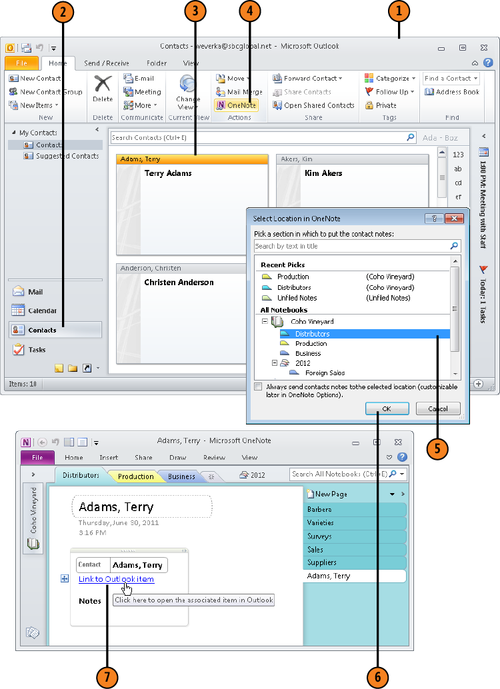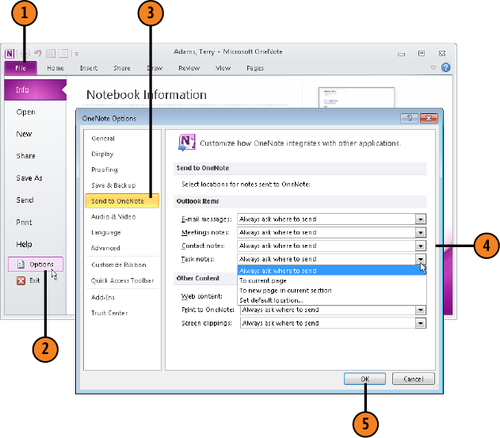In Outlook, you can click the OneNote button to copy information from Outlook to OneNote. You can copy email messages, meetings, contacts,
and tasks. Copy this information from Outlook if you need to keep notes
about email messages, meetings, contacts, or tasks. In the case of
meetings, contacts, and tasks, OneNote not only copies the information
but it also provides a link that you can click to open the meeting,
contact, or task in Outlook.
By default, after you click the OneNote button to
copy information to OneNote, the Select Location in OneNote dialog box
appears so you can choose where to copy the information.
You can, however, choose options in the OneNote
Options dialog box (in the Send to OneNote area) to determine how
information is sent from Outlook to OneNote. The options are as follows:
Always Ask Where to Send: The information is
sent to a section of your choice. In the Select Location in OneNote
dialog box, choose a section and click OK. (This is the default choice.)
To Current Page: The information is sent to the currently open page in OneNote.
To New Page in Current Section: The information is sent to a new page in the currently open section in OneNote.
Set
Default Location: The information is sent to a default section. In the
Select Location in OneNote dialog box, choose the section you want as
the default and click OK.
This table describes where the OneNote button is
located in Outlook and what information is passed to OneNote when you
click this button:
| Outlook Folder | Button Location | Copies to OneNote |
|---|
| Mail | Mail window (Home tab), Message window | The text of an email, as well as its subject, sender, recipients, and sent date. OneNote creates a new page for the email. |
| Calendar | Calendar window (Calendar Tools Appointment tab), Appointment window | The
meeting name, its date and location, attendees’ names, and a link for
opening the meeting in Outlook. OneNote creates a new page for the
meeting. |
| Contacts | Contacts window (Home tab), Contact window (Contact tab) | The
contact’s name and all other information recorded about her or him, as
well as a link for opening the contact in Outlook. OneNote creates a
new page for the contact. |
| Tasks | Tasks window (Home tab), Task window (Task tab) | The task’s name and a link for opening the task in OneNote. OneNote creates a new page for the task. |
1. Enter Outlook Information on a Page
Open the Contacts folder.
Click the OneNote button.
In OneNote, click the link to view the contact in Outlook.

2. Choose How Outlook Sends Information to OneNote
Under Outlook Items, for email messages, meetings, contacts, and tasks, choose how you want to send information to OneNote.
